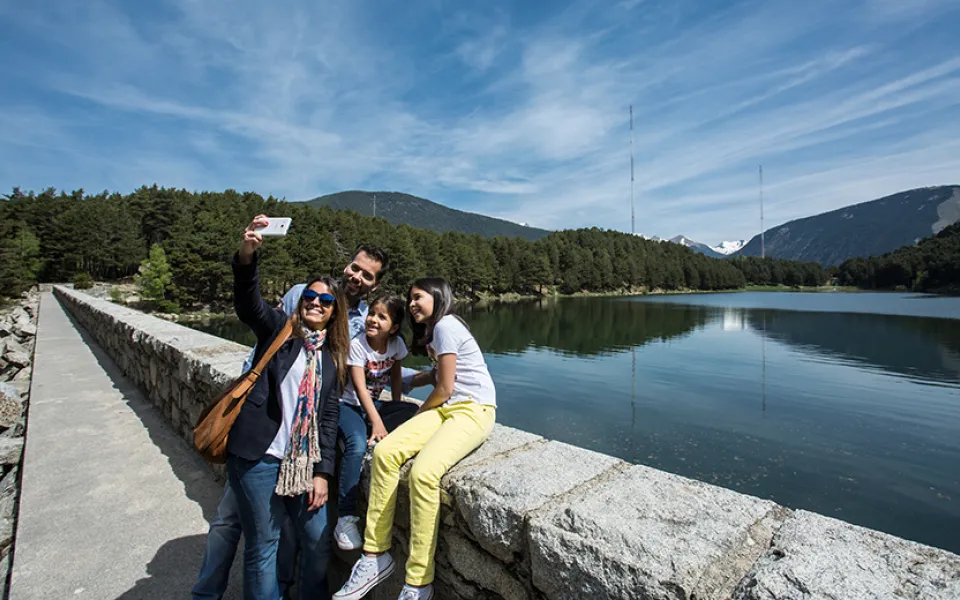Whenever you’re planning a trip to a foreign country, one thing to check before travelling is the currency.. For a holiday in Andorra that’s just as important as when visiting any other country.. And, in this blog post, we’ll explain what money is used in Andorra and also how it’s used, as well as providing a few Andorra currency exchange tips. So, without any further ado, let’s take a look at the currency in Andorra!
What is the official currency in Andorra?
Let’s get straight to the main question of this blog post: what currency does Andorra use? Well, despite not being a member of the European Union, the official currency of Andorra is the euro (€).
Andorra is one of four states, along with Monaco, San Marino and Vatican City, to have signed a currency agreement with the European Union to be able to use the euro without being an EU member. But, despite this agreement, Andorra is not considered to be part of the Eurozone. It’s just that the Andorran currency is the euro.
As for when the currency in Andorra became the euro? Well, the microstate adopted the euro in the year 2002. Before this, there were two forms of legal tender in the country: the Spanish peseta and the French franc. In other words, Andorra and its populationare well-accustomed to using foreign currencies from outside of its borders, and well-used to all the economic implications that brings.
Another important date in the timeline of the Andorra currency is 2011. That year, the country finalised a formal monetary agreement with the European Union, and this agreement was an important milestone, as it granted Andorra the right to officially issue its own euro coins featuring national symbols. These locally minted coins give Andorrans a certain level of pride in the Andorra currency. For example, the one euro Andorra currency coins feature Casa de la Vall, the former seat of parliament and an important historical building in the principality, while the two euro coins contain the Andorran coat of arms along with the motto “virtus unita fortior” – meaning “virtue united is stronger”, in English. Even the 50 cent coin has an Andorran link now, containing an image of the Romanesque church of Santa Coloma, one of the oldest churches in the principality.
Although the monetary agreement with the European Union was signed in 2011, the first Andorran euro coins weren’t released into circulation until 2014. Now, though, they’re common in the principality and have, logically, travelled far and wide. You might even be given an Andorran coin when you receive change in another euro-using country.
Currency exchange tips for tourists visiting Andorra
If you’re planning to visit Andorra, being prepared when it comes to handling money can help you avoid unnecessary stress and also extra costs. Since the euro is the official and only accepted currency in Andorra, it’s a good idea to arrive with euros already in your wallet, both coins and banknotes. Given that Andorra has no airport, meaning you’ll have to pass through Spain or France anyway to arrive in the microstate, it makes extra sense to take out euros before arriving, since the euro is also the currency in these two neighbouring countries.
Given the wide use of the euro, this might even be your own currency, depending on where in Europe you live. That could mean not having to exchange any currency at all before your Andorra holiday. But, if you do need to exchange your own country’s currency for euros, it’s a good idea to do so before you travel, either at your bank or via a reputable currency exchange service. This can save you from the panic ofsuddenly realising you don’t have euros for Andorra, and from the potentially unfavourable exchange rates often found near touristy areas.
That said, ATMs are widely available throughout Andorra, especially in major towns like the capital city of Andorra la Vella. Withdrawing euros directly from ATMs typically offers a better exchange rate than converting cash at exchange offices, but you’ll want to check and be careful of any international withdrawal fees, while some banks also impose daily limits on how much money you can withdraw from ATMs while abroad.
Another thing to consider is that you might not even need all that much cash. It’s increasingly common for Andorra restaurants and shops to accept credit and debit cards, but again you’ll want to be sure that your bank doesn’t charge any surprise fees for using a credit or debit card abroad. Many restaurants and shops also accept contactless payments, making transactions quicker and more convenient, especially for small purchases like coffee, snacks or souvenirs.
The role of the euro in Andorra
In conclusion, the role of the euro in Andorra is an important one. The euro is the main and only accepted currency in the country, so it plays a key role in daily life, in commerce and in tourism. Although Andorra is not a member of the European Union, its adoption of the euro and its formal agreement with the European Union have provided economic stability, strengthened ties with its European neighbours and made life easier for most visitors, who are usually well used to what is one of the most important and commonly used currencies in the world.
